Content for TS 23.002 Word version: 18.0.0
5 Configuration of a Public Land Mobile Network
5.1 Basic configuration
5.2 Configuration of LCS entities
5.3 Configuration of CAMEL entities
5.4 Configuration of CBS entities
...
...
5 Configuration of a Public Land Mobile Network p. 51
5.1 Basic configuration p. 51
The basic configuration of a Public Land Mobile Network (PLMN) supporting GPRS and the interconnection to the PSTN/ISDN and PDN is presented in Figure 1 and Figure 1a. Whereas the basic configuration of a Public Land Mobile Network (PLMN) supporting PS Domain (both GPRS and EPC) and the interconnection to the PSTN/ISDN and PDN is presented in Figure 1b. This configuration presents signalling and user traffic interfaces which can be found in a PLMN. Implementations may be different: some particular functions may be gathered in the same equipment and then some interfaces may become internal interfaces.
In the basic configuration presented in Figure 1, all the functions are considered implemented in different equipment. Therefore, all the interfaces within PLMN are external. Interfaces A and Abis are defined in the 48-series of Technical Specifications. Interfaces Iu, Iur and Iub are defined in the 25.4xx-series of Technical Specifications. Interfaces B, C, D, E, F and G need the support of the Mobile Application Part of the signalling system No. 7 to exchange the data necessary to provide the mobile service. No protocols for the H-interface and for the I-interface are standardized. All the GPRS-specific interfaces (G- series) are defined in the 23-series, 24-series and 29-series of Technical Specifications. Interfaces Mc, Nb, and Nc are defined in TS 23.205 and in the 29-series of Technical Specifications. The specifications for E-UTRAN interfaces S1 and X2 are specified in TS 36.4xx and NAS protocol is specified in TS 24.301 series of specifications. The interfaces S6a/d/S13 are specified in the specifications TS 29.272. The EPC specific S1/3/4/5/8/10/11/12/ series are specified in TS 29.274 for GTP based protocols and for PMIP based S5/8 interfaces are specified in TS 29.275.
From this configuration, all the possible 3GPP access PLMN organisations can be deduced. In the case when some functions are contained in the same equipment, the relevant interfaces become internal to that equipment.
The configuration possibilities when using non-3GPP access technologies using EPS is not part of the scope of this specification. The architecture and details for non-3GPP access and mobility and interworking with non-3GPP access are described in TS 23.402 and the interfaces and protocols are specified in 3GPP 24-series and 29-series of specifications..
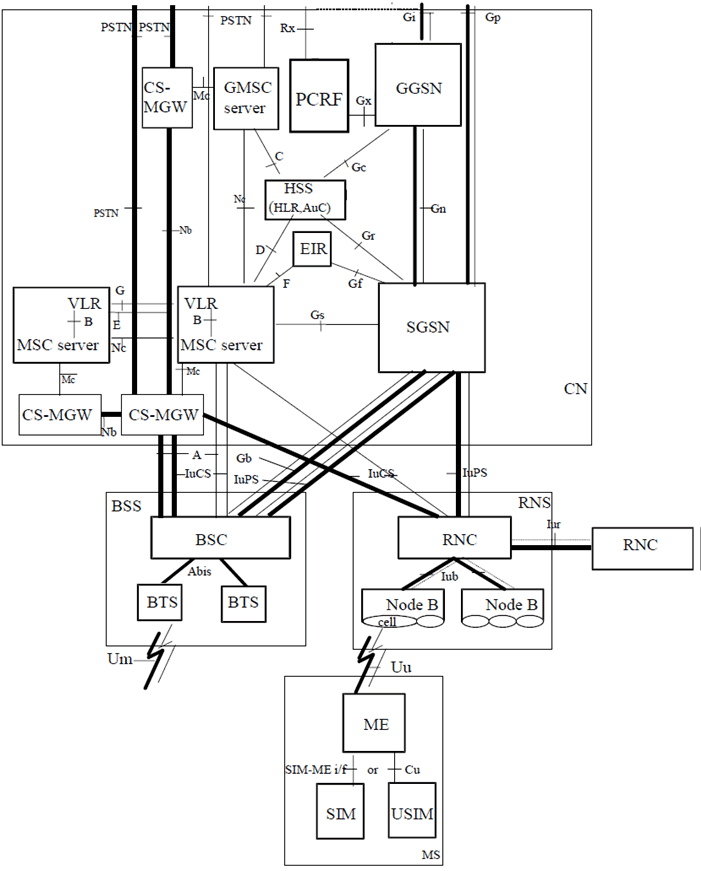
Figure 1: Basic Configuration of a PLMN supporting CS and PS services (using GPRS) and interfaces
(⇒ copy of original 3GPP image)
(⇒ copy of original 3GPP image)
Legend:
Bold lines:
interfaces supporting user traffic;
Dashed lines:
interfaces supporting signalling.
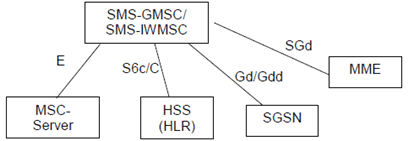
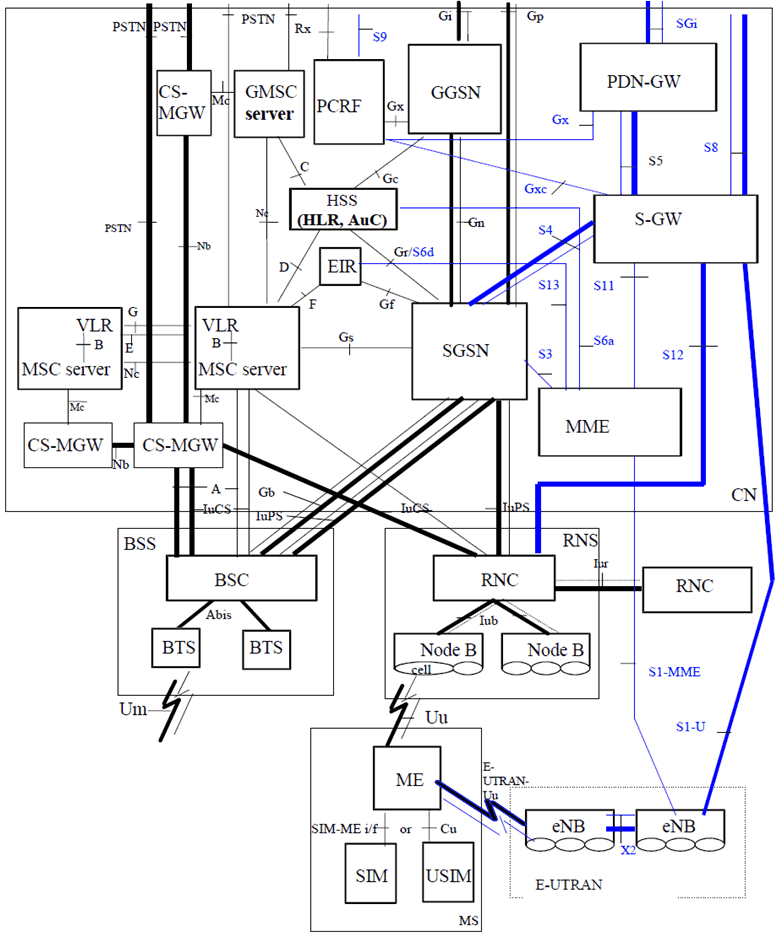
Figure 1b: Basic Configuration of a 3GPP Access PLMN supporting CS and PS services (using GPRS and EPS) and interfaces
(⇒ copy of original 3GPP image)
(⇒ copy of original 3GPP image)
5.2 Configuration of LCS entities p. 56
5.2.1 Configuration of LCS entities for GERAN p. 56
The configuration of LCS entities for GERAN is presented in Figure 2. In the Figure, all the functions are considered implemented in different logical nodes. If two logical nodes are implemented in the same physical equipment, the relevant interfaces may become internal to that equipment.
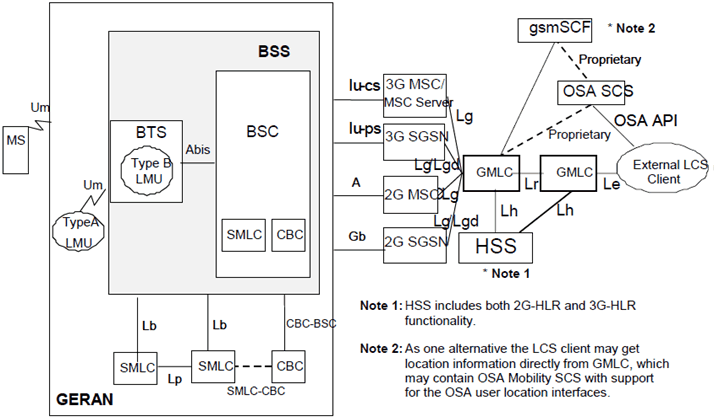
5.2.2 Configuration of LCS entities for UTRAN p. 57
The basic configuration of UTRAN LCS is presented in Figure 3. The SMLC functionality is integrated in SRNC or, in case a Stand-Alone SMLC entity (SAS) is present, split between SRNC and SMLC.
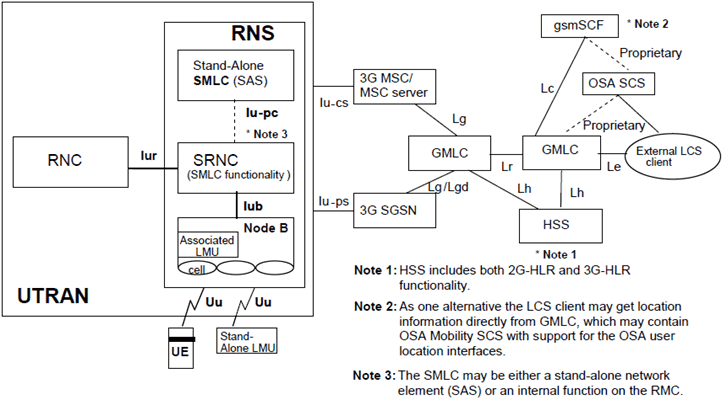
5.2.3 Configuration of LCS entities for E-UTRAN |R9| p. 57
The basic configuration of E-UTRAN LCS is presented in Figure 3a.

5.3 Configuration of CAMEL entities p. 58
The following Figure shows the interconnection of the CAMEL-specific entities with the rest of the network. Only the interfaces specifically involved in CAMEL provisioning are shown, i.e. all the GMSC, MSC, SGSN and HLR interfaces depicted in Figure 1 are still supported by these entities even if not shown. CAMEL is not supported for E-UTRAN access.
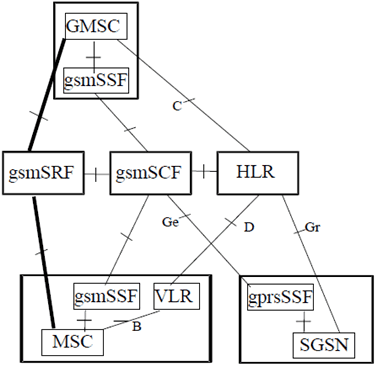
The bold lines are used for interfaces supporting user data only, the dashed lines are used for interfaces supporting signalling only.
5.4 Configuration of CBS entities p. 59
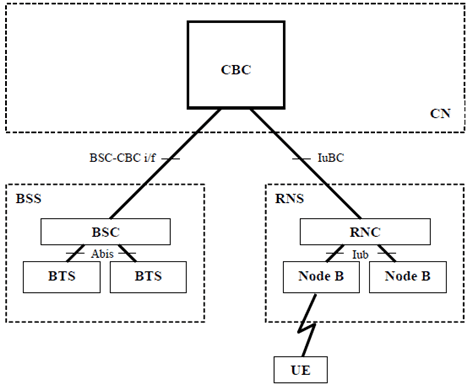
Figure 5: Configuration of a PLMN supporting Cell Broadcast Service entities for GERAN/UTRAN
(⇒ copy of original 3GPP image)
(⇒ copy of original 3GPP image)
